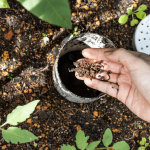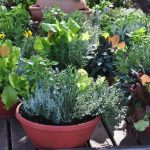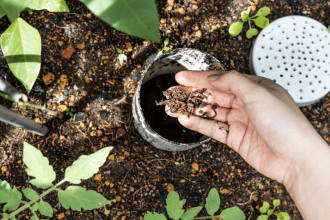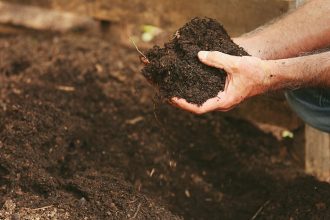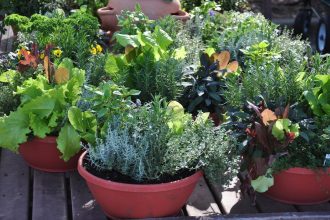As the days grow shorter and colder, many gardeners retreat indoors and bid farewell to their beloved vegetable patches until spring. But what if we told you that with a little creativity and planning, you could enjoy a harvest of fresh produce year-round? Welcome to the wonderful world of year-round vegetable gardening, where seasonal planting guides are your key to a never-ending bounty of fruits and vegetables. Let’s delve into the art of planting strategically, regardless of the season, and discover the joy of savoring homegrown goodness all year long.

Planning Your Year-Round Vegetable Garden
Spring Planting
Spring is the perfect time to start your year-round vegetable garden. As the weather warms up, consider planting crops such as tomatoes, peppers, and squash. These vegetables thrive in the spring temperatures and will provide you with a bountiful harvest throughout the summer months. Don’t forget to also plant some leafy greens like lettuce and spinach, which can tolerate the cool spring weather.
Some popular vegetables to plant in the spring:
- Tomatoes
- Peppers
- Squash
- Lettuce
- Spinach
Summer Maintenance
Once your spring crops are established, it’s important to stay on top of maintenance throughout the summer. Make sure to water your plants regularly, especially during hot weather. Keep an eye out for pests and diseases, and take prompt action to protect your crops. Consider adding a layer of mulch around your plants to help retain moisture and prevent weeds from taking over.
Some tips for summer maintenance:
- Regular watering
- Pest and disease control
- Mulching
- Weed management
Fall Harvest
As the summer comes to an end, it’s time to start thinking about your fall harvest. Planting vegetables such as carrots, beets, and broccoli in late summer will ensure a plentiful harvest in the fall months. These cool-season crops can withstand cooler temperatures and even a light frost, making them perfect for extending your gardening season well into the fall.
Some vegetables to plant for a fall harvest:
- Carrots
- Beets
- Broccoli
- Cauliflower
Selecting the Ideal Vegetables for Each Season
In the world of vegetable gardening, knowing which veggies to plant during each season can make all the difference in the success of your garden. To ensure a bountiful harvest year-round, it’s essential to select the ideal vegetables for each season.
Spring:
– As the weather warms up, consider planting vegetables like lettuce, spinach, carrots, and peas. These hearty greens thrive in the mild spring temperatures and will provide you with fresh, crisp salads all season long.
Summer:
- When the hot summer sun is shining, opt for heat-loving vegetables such as tomatoes, cucumbers, peppers, and zucchini. These veggies will soak up the sun and produce an abundance of delicious fruits for your meals.
Fall:
- As the temperatures start to cool down, turn your focus to cool-weather crops like broccoli, cauliflower, kale, and Brussels sprouts. These hearty vegetables can withstand the chillier weather and provide you with nourishing options for your autumn table.
Winter:
– Don’t let the cold weather stop you from gardening! Consider planting winter vegetables such as beets, turnips, carrots, and winter squash. These root vegetables will thrive in the winter months and provide you with fresh produce even when there’s snow on the ground.
| Season | Ideal Vegetables |
|---|---|
| Spring | Lettuce, Spinach, Carrots, Peas |
| Summer | Tomatoes, Cucumbers, Peppers, Zucchini |
| Fall | Broccoli, Cauliflower, Kale, Brussels Sprouts |
| Winter | Beets, Turnips, Carrots, Winter Squash |
Tips for Extending Your Harvest with Succession Planting
Succession planting is a gardening technique that involves planting crops at different times throughout the growing season to ensure a continuous harvest. By staggering your plantings, you can enjoy a steady supply of fresh produce for an extended period of time. Here are some tips to help you make the most of succession planting in your vegetable garden:
- Choose fast-maturing crops: When planning your succession planting schedule, opt for vegetables that have a quick turnaround time. This way, you can harvest one crop and replant the same area with a new crop in a relatively short amount of time.
- Make use of vertical space: Maximize your garden space by growing vining crops like cucumbers, peas, and beans on trellises or supports. This will allow you to plant new crops in the ground once the first harvest is complete.
- Rotate your crops: To prevent nutrient depletion and reduce the risk of pests and diseases, rotate your crops with each planting. This will help maintain soil fertility and overall garden health.
| Crop | Days to Maturity |
|---|---|
| Lettuce | 30 days |
| Radishes | 25 days |
| Carrots | 60 days |
Maximizing Your Harvest with Seasonal Crop Rotation
Spring:
- Plant tomatoes, cucumbers, and peppers to take advantage of the warmer weather.
- Crop rotation prevents soil depletion and reduces the risk of pests and diseases.
- Consider planting peas and lettuce as early spring crops for a quick harvest.
- Rotate leafy greens like spinach and kale to a different area in your garden to promote healthy soil.
Summer:
- Rotate your crops by planting corn, beans, and squash in the same spot to benefit from their complementary growth.
- Utilize vertical gardening techniques for space-saving opportunities.
- Consider intercropping with herbs like basil and parsley for added flavor and pest control.
- Rotate nightshade plants like eggplant and potatoes to prevent disease buildup in the soil.
As you embark on your year-round vegetable gardening journey with this seasonal planting guide, remember that each season offers its own unique challenges and rewards. By following this guide, you will be able to grow a bountiful garden that will provide you with fresh, healthy produce all year long. So roll up your sleeves, dig in, and watch your garden flourish in every season. Happy gardening!


